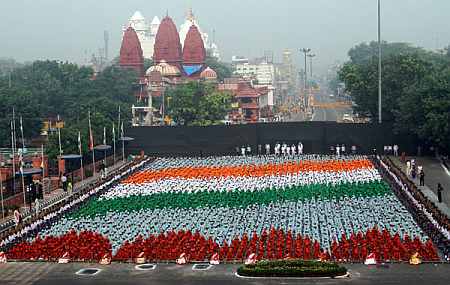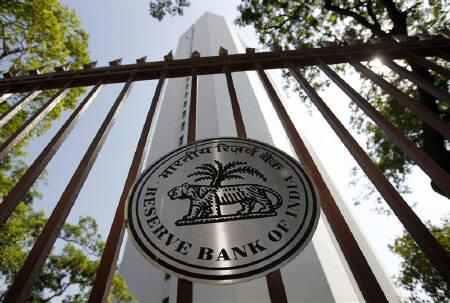Photographs: Fayaz Kabli/Reuters Harendra Kumar in New Delhi
With the Indian economy showing weak macro fundamentals, capital flows will remain muted. writes Harendra Kumar.
India's economy is now caught in a downward spiral, which, if unchecked, could be persistent and extended.
The domestic business cycle is now synchronised with the rest of the world and exposed to a contagion in the event of a euro zone collapse.
We fear the current policy framework -- both fiscal and monetary -- exposes the economy to downward risks and pushes it into uncharted territory as there are fewer levers to pull, than those available in 2008, to firefight.
. . .
India's economy is caught in a quagmire
Photographs: Reuters
In view of the continued policy paralysis and conflicting monetary policy amidst a weakening global outlook, we expect the Sensex to hover around its downward channel of 15,000-17,500 for most of the year.
There are no triggers in the immediate term for the markets to move beyond this channel.
Based on domestic fundamentals and heightened risk aversion, we see a further correction in the rupee.
Unlike in 2008, the pace of revival will be very modest.
. . .
India's economy is caught in a quagmire
Our FY13-end and FY14-end forecast are now at 54.3 and 50.7.
For most of FY13, the rupee is expected to remain volatile, in the range of 51-55.
Globally, risk aversion will likely remain the theme in FY13.
With the Indian economy showing weak macro fundamentals, capital flows will remain muted.
This in turn, will shift the onus on forex reserves to finance the current account deficits, even as forex reserve accretion remains tough.
. . .
India's economy is caught in a quagmire
Photographs: Mukesh Gupta/Reuters
This explains, among other reasons, why the central bank has largely stayed away from an aggressive intervention in the currency markets.
The only silver-lining is that a lot of 'new lows' will hit several macro fundamentals, for example, the Index of Industrial Production, inflation, exchange rate and gross domestic product occur in the near term and this potentially points to the lowest point in an economic cycle.
We expect the current slowdown will linger for three quarters, till FY13-end.
We do anticipate some concerted efforts by the government on reforms by the monsoon session of Parliament in 2012.
. . .
India's economy is caught in a quagmire
Photographs: Danish Siddiqui/Reuters
Depreciation in the rupee will kick-start revival in manufacturing with a lag.
Fortunately, at least 30 per cent of the Nifty constituents will be positively affected due to the tailwinds of a weak rupee.
The currency will have a positive impact on sectors like IT services and select metal and auto companies.
These are good areas to invest in, as the strong resurgence in US economy will also benefit them.
The author is managing director and head (institutional equities & global research), Elara Capital







article